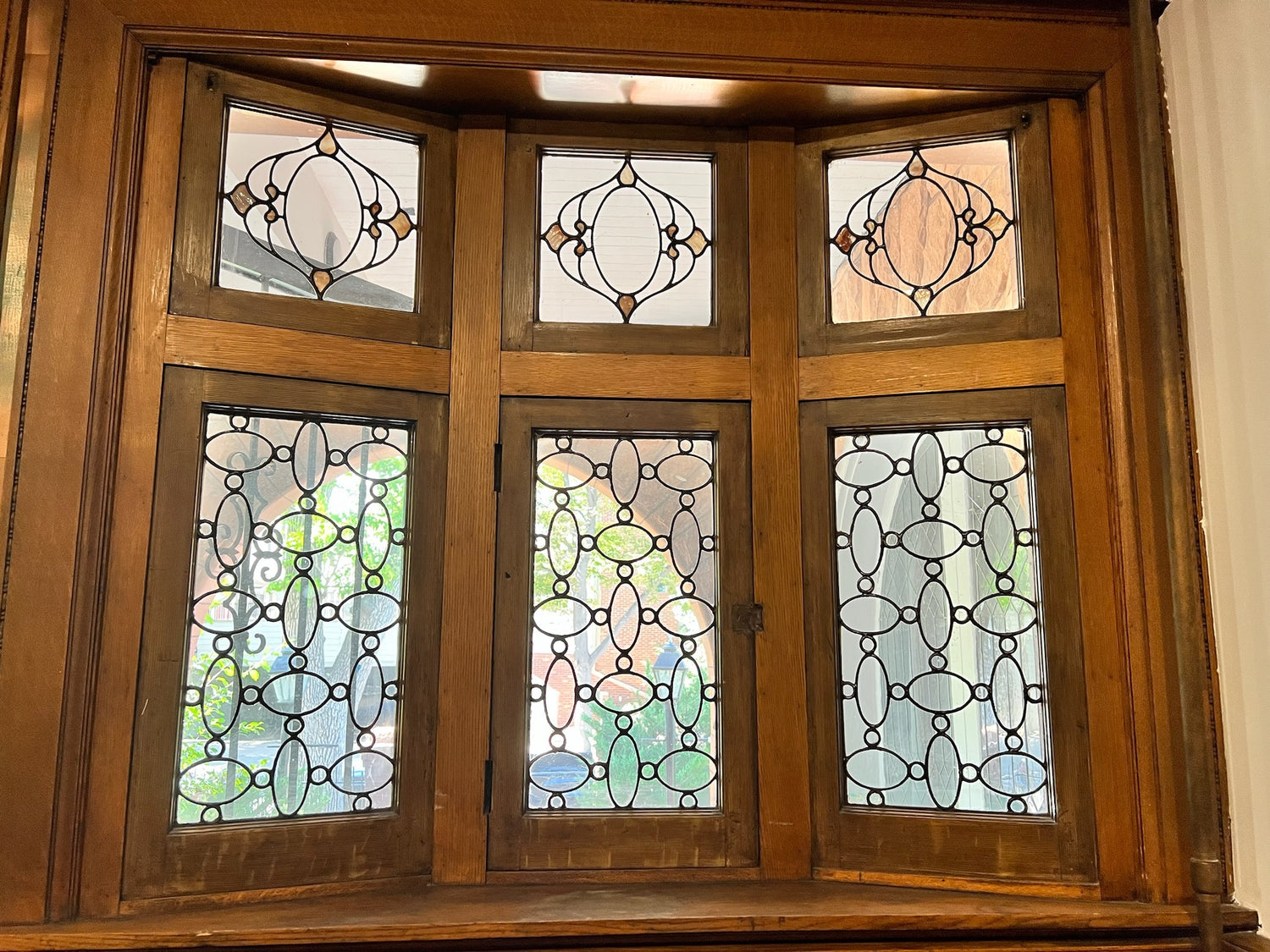
Stained Glass Repair and Restoration
Age affects us all, and stained glass is no exception! Thankfully, skilled artisans like us offer stained glass repair and restoration services to bring these beautiful works back to life. Whether it’s the historical restoration of large church windows or the repair of a family heirloom passed down through generations, Little Glass Art is here to guide you through the process and help restore your piece to its former glory.
Jump to the contact us section ↓
Types of Stained Glass
When discussing stained glass, there are two primary methods used: copper foil, also known as the "Tiffany" method, and lead came, or the "leaded" method. For example, the large windows you often see in churches are typically made using the leaded method. Meanwhile, stained glass lamps and suncatchers are commonly crafted with the copper foil technique.
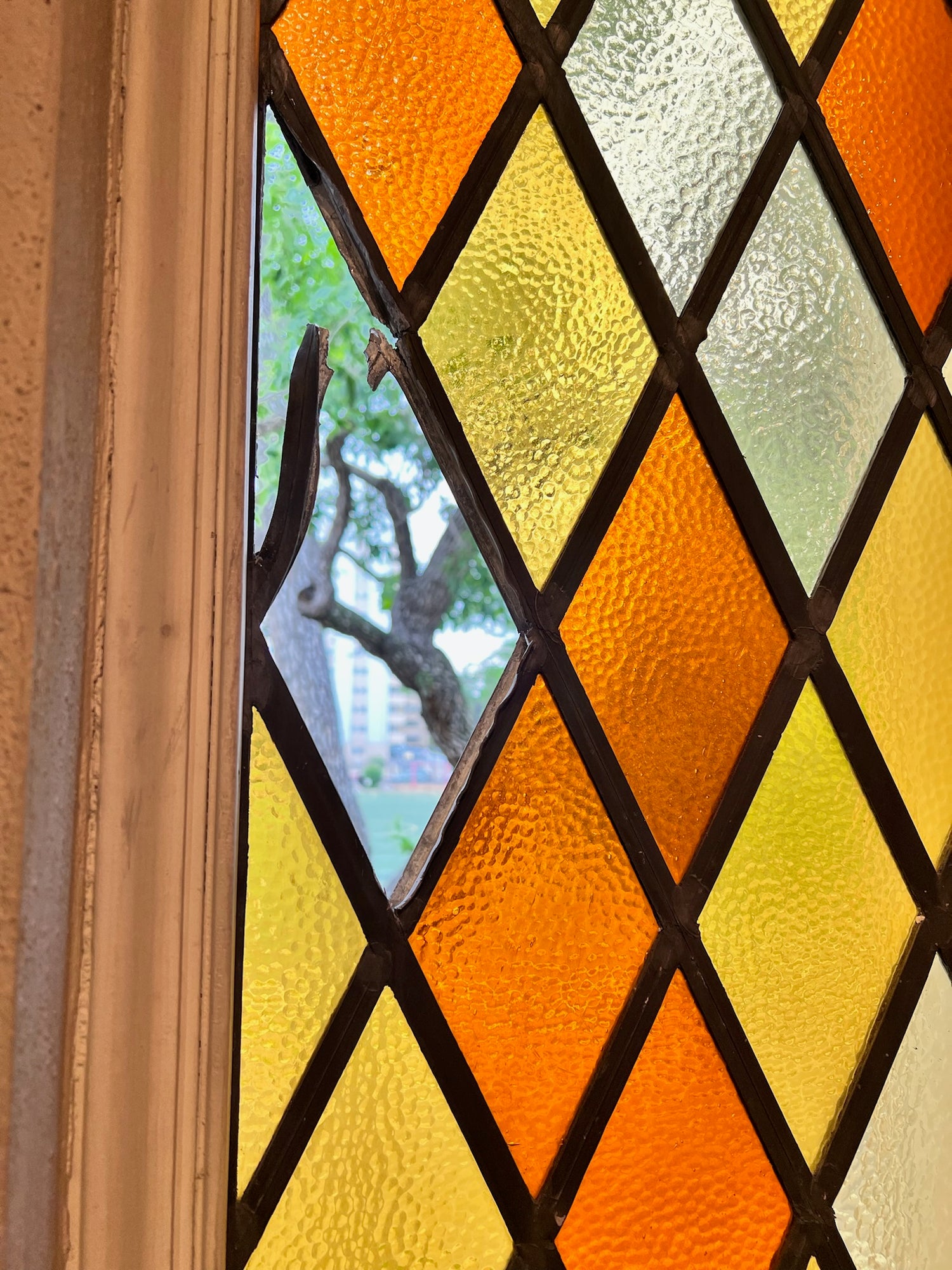
Leaded Stained Glass
Stained glass that utilizes lead came is also referred to as "leaded" stained glass. This method uses lead came—strips of channeled lead—to hold each piece of glass in place. The joints where the came meets are soldered to ensure a strong and sturdy structure.
When it comes to repairing leaded stained glass, there are a few approaches we can take. Ideally, we can open the lead channel with minimal disruption to the original structure, allowing us to replace broken glass while preserving the existing came. However, there are instances where the lead came itself has deteriorated and must be replaced.
For antique restoration projects, the process often involves carefully salvaging the original glass while rebuilding the piece with new lead came from the ground up. Our goal with every restoration is to retain as much of the original material as possible. When modern materials are necessary, we take special care to match the original artist’s intent and style, using options that remain true to the period.
Are you interested in trying the leaded method?
Check out our 4-hour, just-for-fun mini lead class or our multiple-session masterclass on the method.
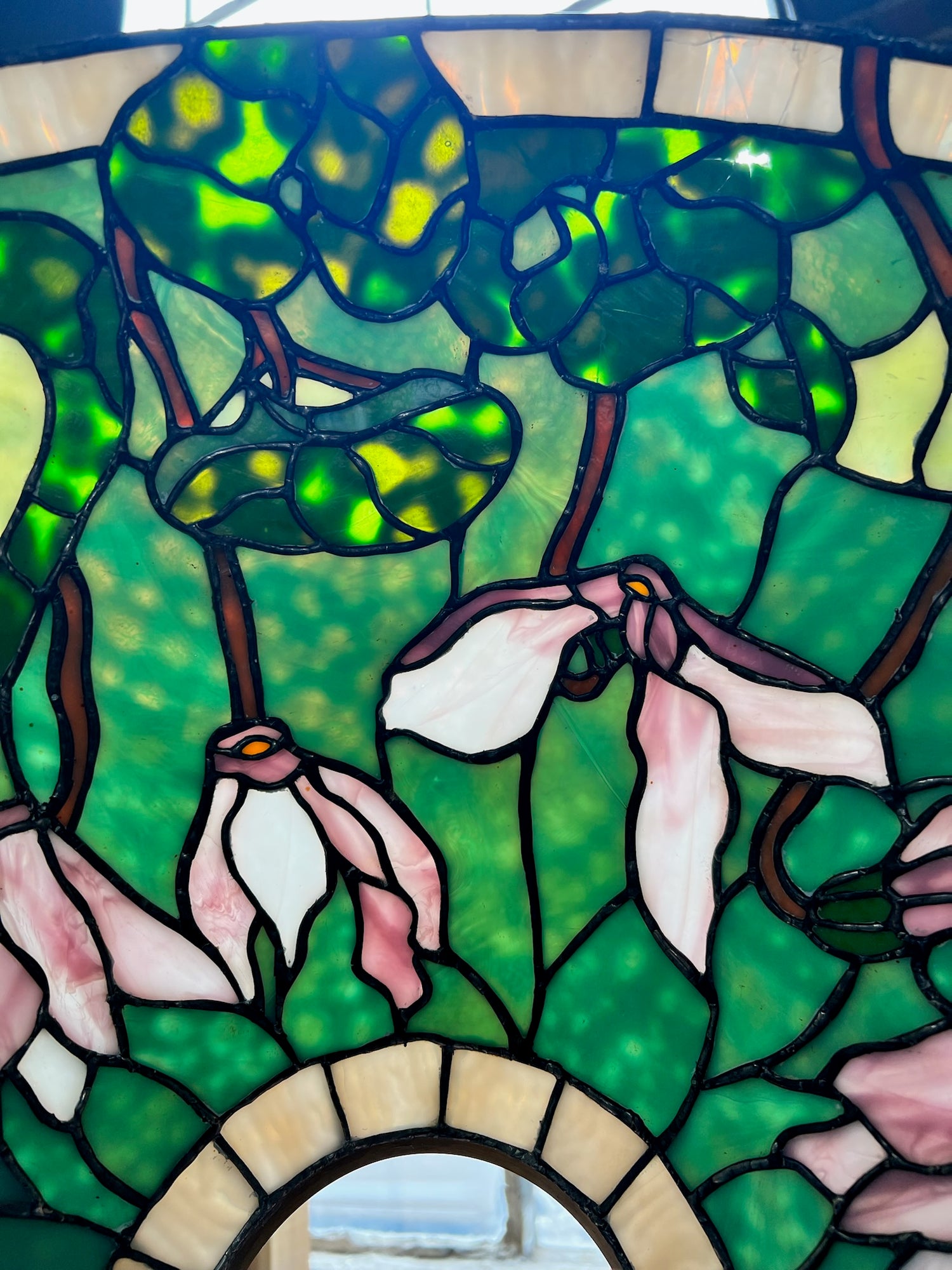
Copper Foil Stained Glass
The copper foil method is commonly used for three-dimensional stained glass items like lamps or smaller pieces such as suncatchers. This technique, the newer of the two primary stained glass methods, gained widespread popularity thanks to Tiffany & Co., particularly with the production of their famous lamps. In this method, each piece of glass is ground to shape, and the edges are wrapped in copper foil, allowing the pieces to be soldered together.
When it comes to repairs, the process involves carefully removing broken pieces and the surrounding foil before preparing for replacements. Depending on the location of the break, nearby pieces may need to be removed to access and repair the damaged area.
Due to the additional steps involved in copper foil work, repairs and commissions can sometimes be more costly due to the labor-intensive nature of the process. However, if the breaks are stable and minor, customers may opt to only repair sections that pose a risk of further damage, saving on costs.
Are you interested in trying the copper foil method?
Check out our 3-hour, just-for-fun tiffany method class or our multiple-session masterclass on the method.
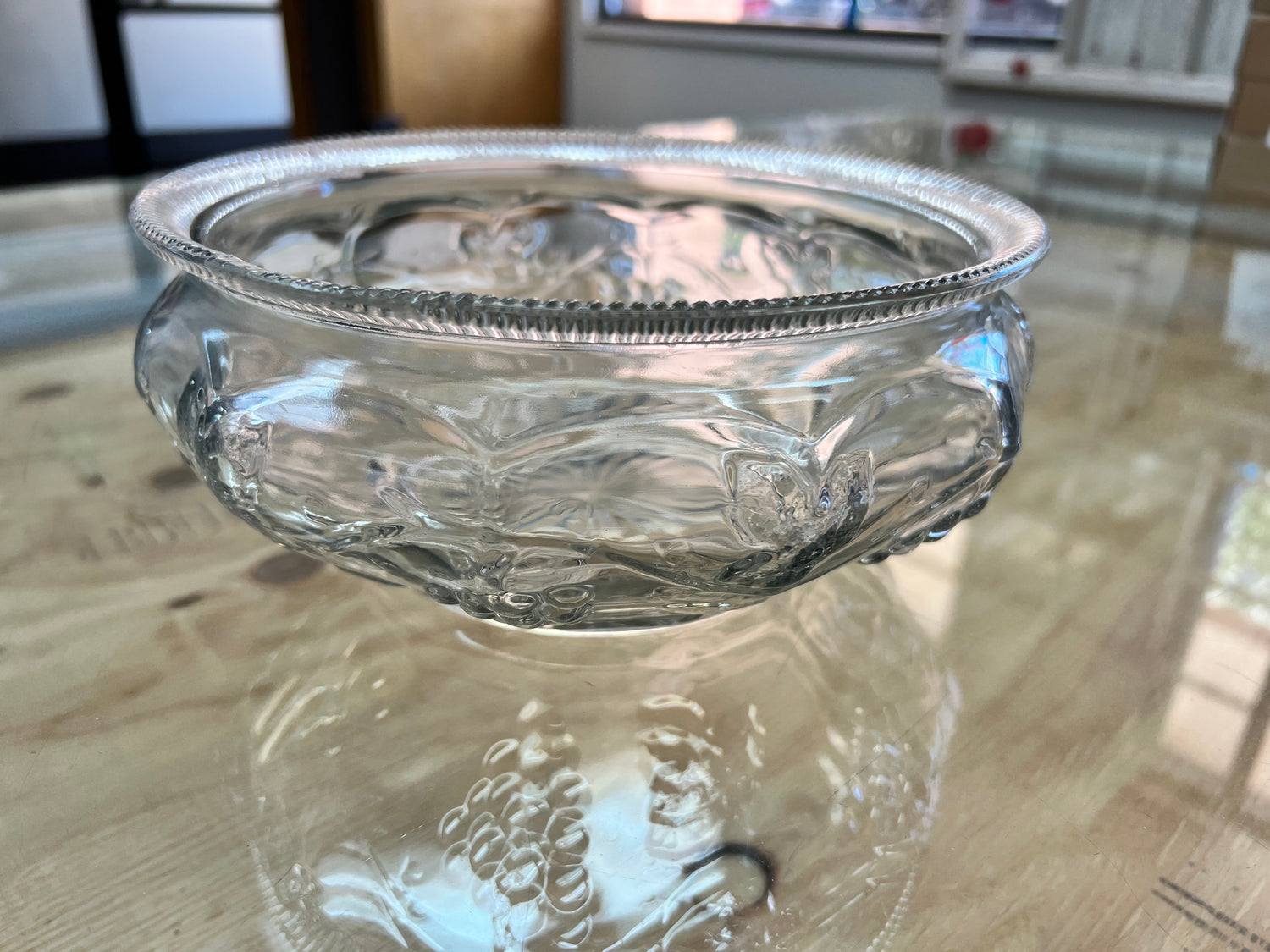
Epoxy Resin Glass Repair
We are excited to now offer epoxy resin repairs for glass figurines, crystal bowls, cups, glasses, and other delicate glass items. This method allows us to restore fragile and intricate glass pieces by bonding broken parts together with high-strength epoxy resin. While this is a newer service for us, we’ve successfully completed several projects with excellent results that our customers have been pleased with.
Epoxy resin is ideal for repairing fine glass artwork and crystal pieces that require careful handling. Our team assesses each item to determine the best repair strategy, aiming to preserve the original beauty and function while ensuring a strong, durable fix.
If you have a cherished glass or crystal item in need of repair, reach out to us! We’ll review the project and provide a price estimate once we’ve seen photos of the damage.
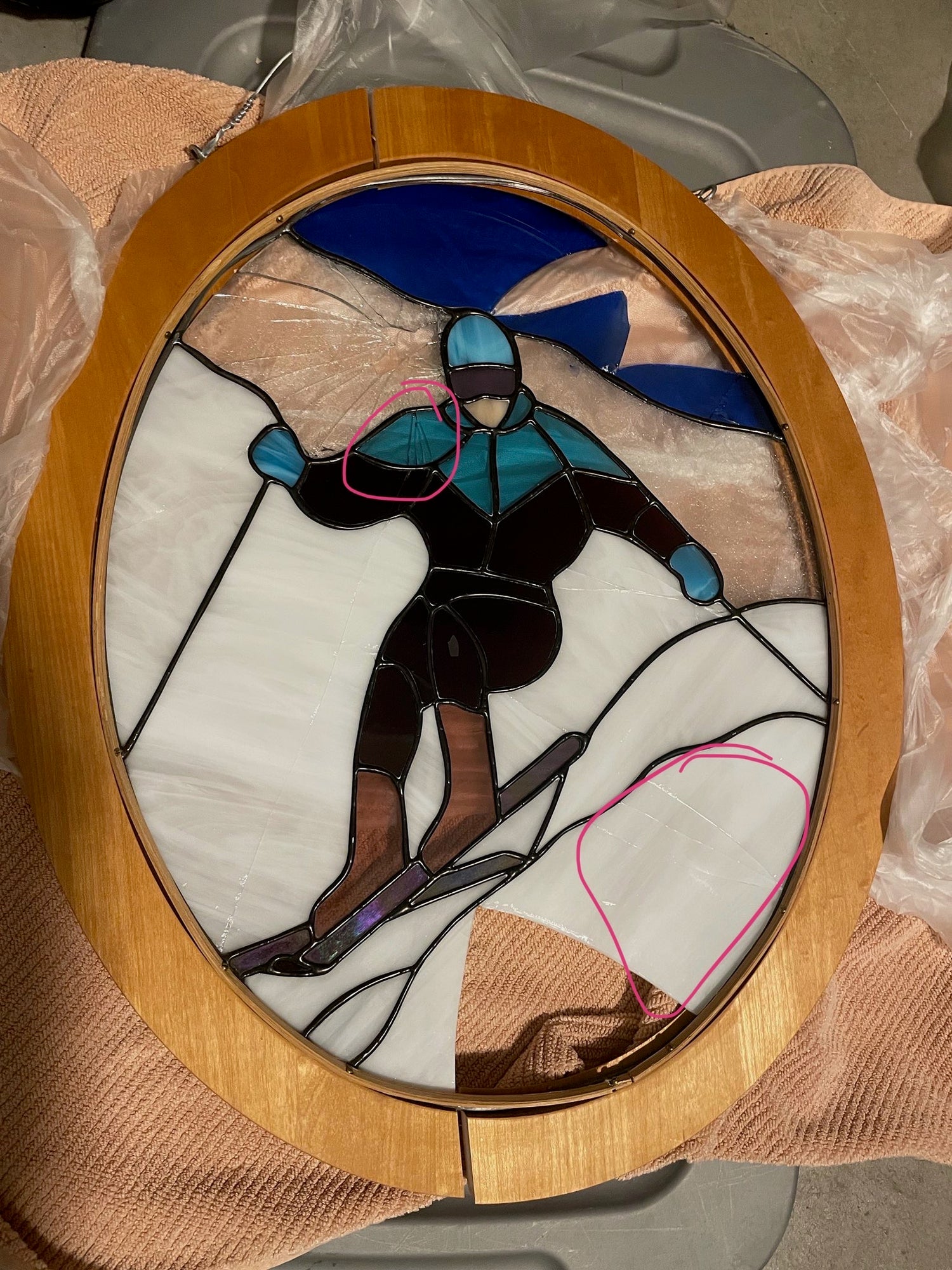
Estimating Repair Cost
We estimate the cost of stained glass repair and restoration based on the materials required and the time we expect the repair to take. To provide an initial estimate, we ask customers to send a picture of the piece needing repair. Based on the image, we can give you a general price range.
If the price range fits your budget, you can drop off the repair at our studio. Once we inspect the piece in person, we’ll provide a detailed estimate with an exact price and seek your approval before beginning the work.
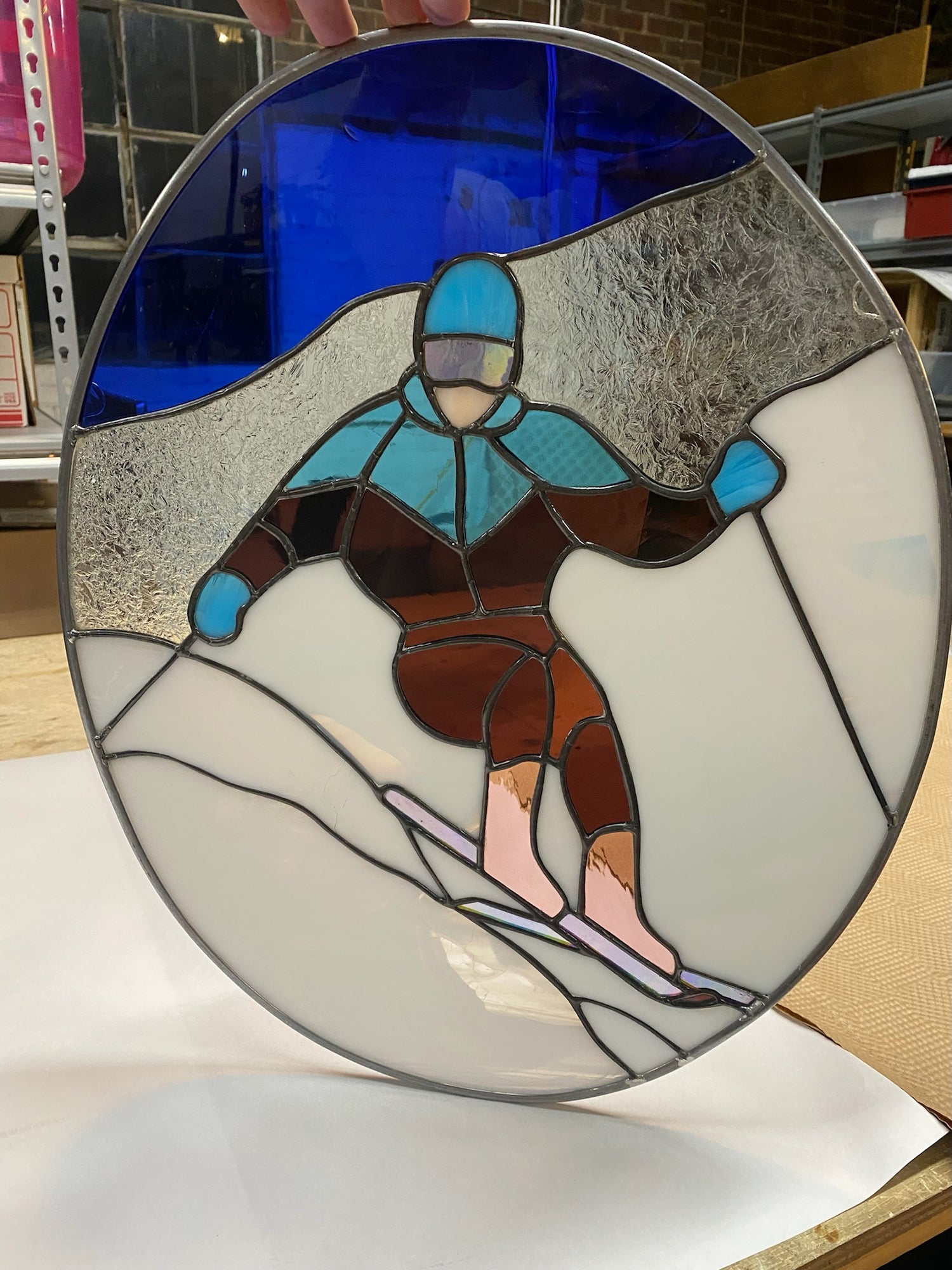
Dropping Off Your Repair
In-Studio Repairs
For uninstalled artwork like panels, lamps, and suncatchers, in-studio repairs are typically the most efficient and cost-effective option. After you've received and accepted our estimate, you’re welcome to drop off your artwork at our Denver studio, Tuesday to Friday (and some Saturdays), from 10:00 am to 5:00 pm. Please call or text us ahead of time to confirm your drop-off to ensure we’re available, as we are often out on jobs. If those times don’t work, let us know, and we’ll arrange a time that fits your schedule.
Scheduling an Onsite Repair
For installed stained glass, an onsite repair by a professional may be necessary. We will provide you with details about the cost, timeline, and process. After you accept our estimate, we’ll coordinate a service date with you. Most onsite repairs are completed within one to two days once work begins.
Please note that estimates for onsite repairs may have a broader price range due to the unpredictability of the work. We always strive to complete the job efficiently while staying within your budget.
Getting Your Repair Started
Get in Touch!
If you haven’t already, our team will request pictures of your artwork to provide an accurate price range for the repair.
Once you approve the estimate, we’ll assist you in arranging the drop-off of your piece or scheduling an onsite repair.
- Choosing a selection results in a full page refresh.
- Opens in a new window.
